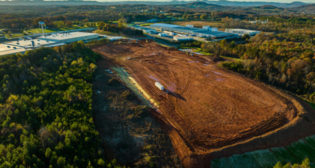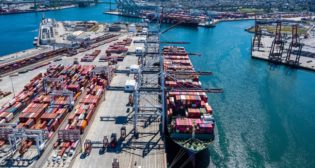
NYCT: Faster, safer
Written by William C. Vantuono, Editor-in-Chief
MTA New York City Transit has made progress in safely increasing subway speed limits with its Save Safe Seconds Campaign, part of the agency’s Subway Action Plan initiated by President Andy Byford.
Since late-summer 2018, an NYCT safety committee has approved increases to speed limits at more than 100 locations, and the agency has implemented more than 50 of them. These increases follow significant improvements in service, including a 50% reduction in major incidents and a 32% rise in system-wide on-time performance.
More than 20 new locations have received speed limit increases since late January 2019. “When eventually implemented throughout the entirety of the system, these speed limit increases will manifest as tangible, noticeable improvements to commute times for many subway users,” NYCT said.
To identify areas in the system through which trains can safely pass at higher speeds, NYCT’s SPEED (Subway Performance Evaluation, Education and Development) Unit, which consists of employees with various specialties established in tandem with union officials, has traversed almost all of NYCT’s approximately 700 track-miles over the past several months. The SPEED Unit conducts various tests to determine whether certain track segments might be able to support higher speeds than currently permitted, without compromising existing standards for safety and passenger comfort.
In addition to testing for raising speed limits, the SPEED Unit is also tasked with testing the accuracy of speed regulating signals known as “grade time signals” or “timer signals,” with more than 95% of some 2,000 such signals tested since the initiative began in summer 2018. Approximately 350 faulty timer signals have been discovered, and 105 have been recalibrated so far “in what amounts to very labor-intensive work to inspect, diagnose and repair or replace numerous possible pieces of equipment during times of exclusive track access for workers such as weekends or nights,” NYCT noted.
The safety committee reviewing speed limit increases includes members of NYC Transit’s Office of System Safety, as well as other personnel who work on operations planning, service delivery, and track and signal maintenance and repair.
The SPEED Unit was formed in summer 2018 as part of Byford’s Save Safe Seconds campaign, led by Senior Vice President for Subways Sally Librera.
“Since I arrived here, I have been relentless about identifying ways to improve our daily operations and bring better service to the millions who ride our trains each day,” said Byford. “The SPEED Unit is doing just that. By meticulously examining places where trains can go faster safely, we are bringing tangible daily benefits to our customers. As always, I commend all of our workers who are working so hard to improve the lives of our customers.”
HISTORY OF SPEED LIMITS AND TIMER SIGNALS
The NYCT subway system, the first segment of which—the IRT (Interborough Rapid Transit)—opened in 1904, included various safety measures to ensure that trains were not going faster than the conditions they could handle. These measures ensured sufficient stopping distance for the braking capacity to a train ahead. They also provide for safe operation on turnouts, curves and grades, and when approaching a train stopped in a station.
One simple measure was placing civil speed restrictions (speed limits and signs) at locations that required reduced speeds. The speed limits were designed to consider the operating characteristics of the trains that were in service at the time as well as track geometry. Another measure involved fail-safe (vital) timer signals connected to timing devices set to trip a train’s emergency brakes if a train passed a fixed point at a higher speed than allowed.
“Over the decades, car design and track geometry have improved, allowing cars to maintain stability and safe operation at higher speeds, but the speed limits were not always changed to reflect these advancements in safety and comfort,” NYCY explained. “Meanwhile, timer signals continued to be installed throughout the subway system, with an uptick after two fatal crashes in the 1990s—one at Union Square and one on the Williamsburg Bridge. Eventually, the number of timer signals grew to approximately 2,000 system-wide.
“Over time, many of these signals became overly restrictive for a number of reasons, including wear and tear, and rail replacements that did not restore timer equipment with complete precision. This can cause trains to operate at slower speeds than they were actually safely intended. Over time, these safety measures, which have been effective at their intended goal of preventing accidents, had the unintended consequence of slowing some trips and causing delays by forcing trains to go slower than safely able or allowed.”



